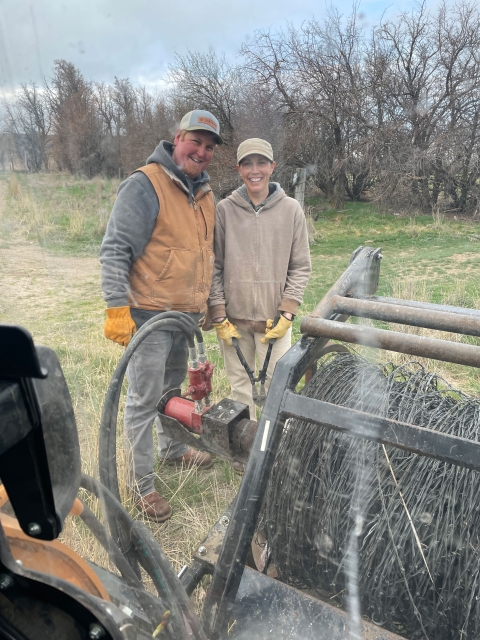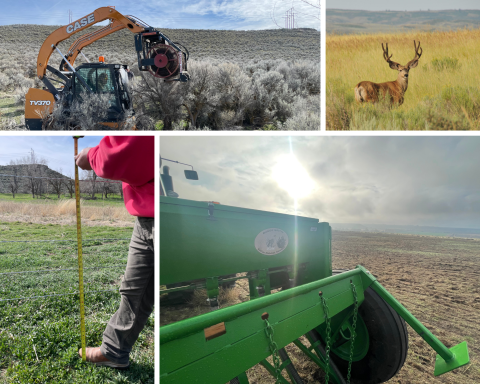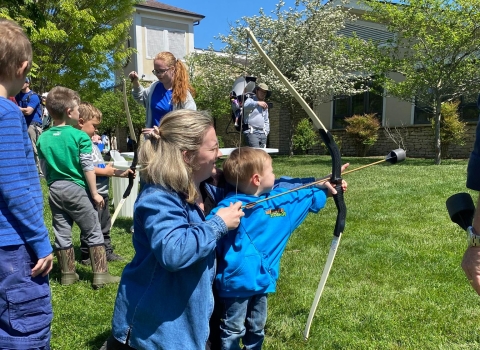By Josh White, Partners for Fish and Wildlife Biologist
In south-central Idaho, near the town of Bliss, the sagebrush sagebrush
The western United States’ sagebrush country encompasses over 175 million acres of public and private lands. The sagebrush landscape provides many benefits to our rural economies and communities, and it serves as crucial habitat for a diversity of wildlife, including the iconic greater sage-grouse and over 350 other species.
Learn more about sagebrush desert is interrupted by an oasis of rangeland and pivot-irrigated agriculture called the Clover Creek Ranch. It is here, on this 2,200-acre working farm and ranch managed by Jud and Sarah Siddoway, that mule deer, elk, and pronghorn spend their winters in what biologists call, “critical winter range.” This area harbors a large volume of deer and elk and also wintering sage-grouse, migrating waterfowl, and sand-hill crane. This is why Josh White, with the Idaho Partners for Fish and Wildlife Program (PFW) joined forces with the Idaho Department of Fish and Game (IDFG) and the Idaho Fish and Wildlife Foundation to complete a big-game migration habitat and movement project on the Clover Creek Ranch.
Project goals were to reduce the impact of dilapidated and net-wire fences to large ungulate movement. A second goal was to restore approximately 700-acres of invasive annual grassland to a functional sagebrush-steppe habitat type with deep-rooted perennial bunch grasses, sagebrush, and bitterbrush. Implementation began during fall 2020 and was completed during June 2022. In the northern portion of the ranch, 670-acres of upland (rangeland) habitat was treated with a pre-emergent herbicide to reduce invasive-annual grass germination. Within the same treatment unit, 663-acres were aerial seeded with a sagebrush/grass mix, 211-acres were drill seeded by the landowner utilizing USFWS rangeland drill, and approximately 15-acres were planted with sagebrush and bitterbrush seedlings. PFW staff worked with the landowner to remove 6.3-miles of fence identified through IDFG GSP-data and on-the-ground observations to have the most impact to wild ungulates. IDFG partnered with the landowner to replace 4.4-miles of fence with a 4-strand wildlife friendly fence design. Sections of the fence were let-down and high-tensile electric, allowing for easy, seasonal management. Currently, the seeding has established over a large area of the treatment area, as Idaho received considerable late spring moisture. The treatment pastures will be rested for at least 3 growing seasons to maximize opportunity for grass and shrub establishment.
PFW staff will monitor the project through summer 2022 to develop adaptive management actions. The partnership hopes to conduct future habitat restoration work, such as additional fence removal/replacement work, a second application of pre-emergent herbicide to further reduce invasive-annual grass establishment, and the list goes on. The first phase of work at Clover Creek Ranch was funded through Secretarial Order 3362 (Partners for Fish & Wildlife Program), IDFG, and the Clover Creek Ranch and serves as an important example of state-federal partnerships working in local communities to benefit wildlife, while maintaining working landscapes.





